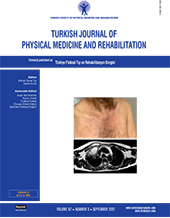Effectiveness of mirror therapy on upper limb function, activities of daily living, and depression in post-stroke depression patients
Patients and methods: Between November 2018 and December 2019, a total of 60 post-stroke patients (33 males, 27 females; mean age: 58.45±11.13 years; range, 35 to 88 years) were included. The patients were randomly divided into either the cosntrol group (n=30) or the MT group (n=30). Regular occupational therapy was provided for the control group (two times per day for 30 min per session, five times per week over four weeks). Occupational therapy and MT were used to treat patients in the mirror group (one 30 min session once per day, five times per week over four weeks). Motor function (Fugl-Meyer Assessment of the Upper Extremity, FMA-UE), ADL (Modified Barthel Index, MBI) and depression (17-item Hamilton Depression Scale, HAMD-17) were used to evaluate the treatment outcomes.
Results: Before treatment, the mean HAMD-17, FMA-UE, and MBI scores showed no significant difference between the two groups (p>0.05). After treatment, the mirror group exhibited more significant improvements than the control group in terms of the mean HAMD-17, FM-UE, and MBI (p<0.05). After four weeks, the mean FMA-UE and MBI scores revealed more significant improvements than the baseline scores in the control group (p<0.01). The mean HAMD-17, FMA-UE, and MBI scores showed more significant improvements than the baseline scores in the MT group (p<0.001).
Conclusion: Based on these results, MT can effectively improve motor function, ADLs, and depression in post-stroke depression patients. The curative effectiveness of MT seems to be more prominent than the regular occupational therapy.
Keywords : Activities of daily living, depression, mirror therapy, post-stroke depression, upper limb function

















